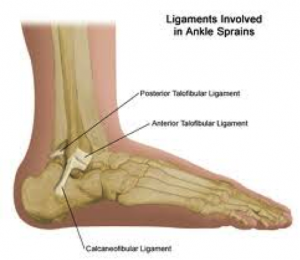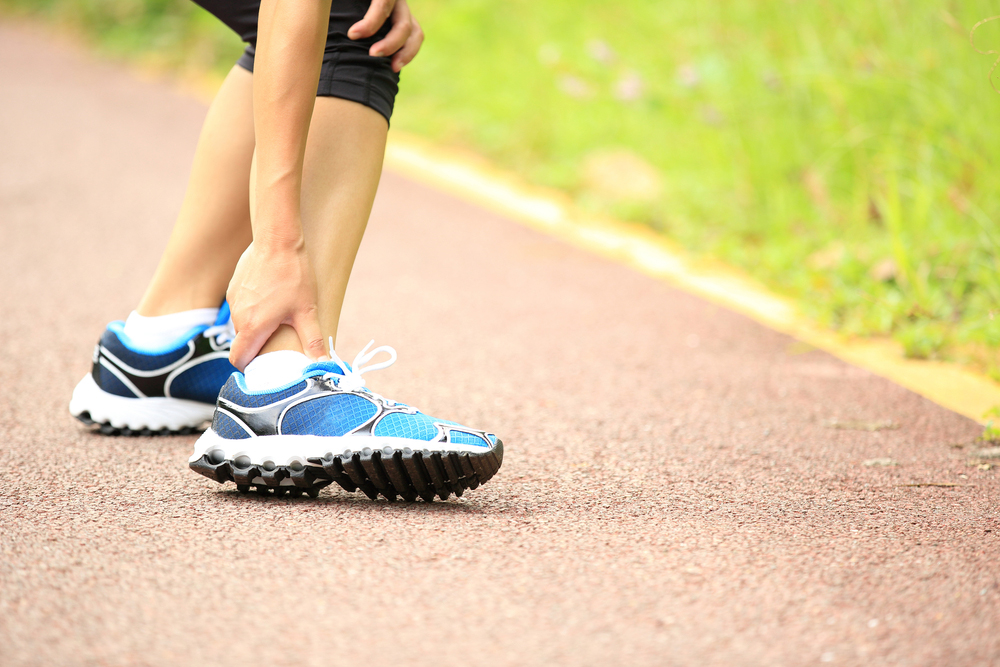Fit4-Physio dishes out some advice when it comes to the dreaded sprained ankle – an injury all too common amongst court players (and any sport involving rapid changes of direction). The most common ankle sprain is an inversion sprain where the ankle is rolled to the outside and is the one we’ll discuss here.
What is a sprained ankle?
Well, the ankle has ligaments (fibrous structures joining bone to bone) that provide stability to the joint. The group of 3 outside or lateral ligaments are thin but tough bands. When the ankle is sprained the ligaments are stretched beyond their normal length and they become injured.

What type of injury is likely?
These ligaments are generally classified into 3 grades.
Grade 1 = Mild injury. Ligaments stretched but not torn. Minimal swelling / pain. Minimal limitation to daily activity
Grade 2 = A partial tearing of one or more of the lateral ligaments. Often moderate swelling and bruising. Moderate limitation to activity.
Grade 3 = A complete tear / rupture of one or more ligaments. Severe pain (usually unable to weight bear) and swelling / bruising. Severe limitation of activity.
Sometimes, in severe injuries, the bone and ankle joint can be injured. If you suspect this, an x-ray may be required.
What should you do if you suffer an ankle sprain?
The best immediate management is to follow the ‘PRICE’ protocol.
Protect, Rest, Ice, Compress, Elevate
(Ice can burn ! – be careful to protect your skin when icing by placing the ice on a wet cloth on the skin)
Early mobilisation is generally considered the best way to restore movement but a common sense approach is recommended – listen to your body……it’s good at telling you (with pain) when you should be resting in the early stages!
If you really cant weight bear after injury, you might be best to go to A&E as an x-ray may be required to rule out any injury to the bone.
How can physiotherapy help?
We can accurately diagnose your injury and help in the first instance with pain and inflammation relief and to restore general range of movement.
After the initial recovery phase, rehabilitation should be focused on graded strengthening, balance exercises and phased return to activity.
If any of the steps of recovery are missed out or shortcuts are taken, it is possible to have ongoing and chronic problems including pain, swelling and reduced range of movement.
If you need any help on managing these types of injuries (or any others for that matter!), please don’t hesitate to contact us.

